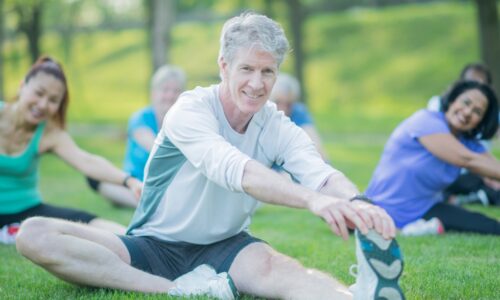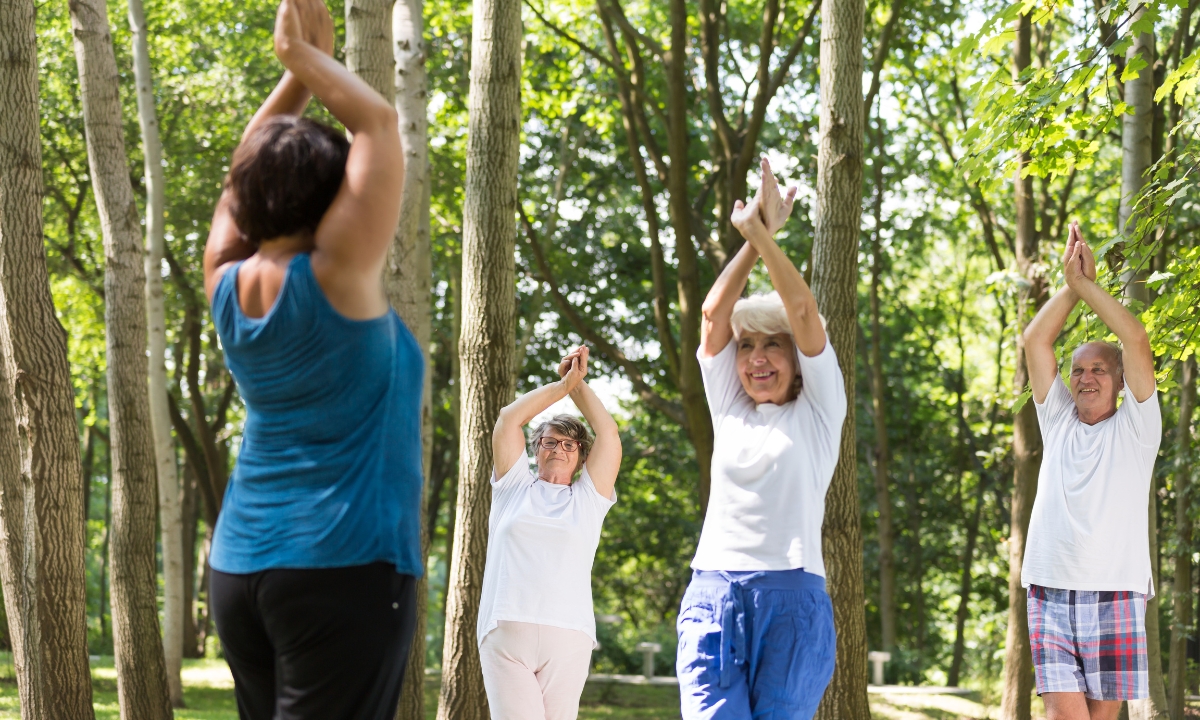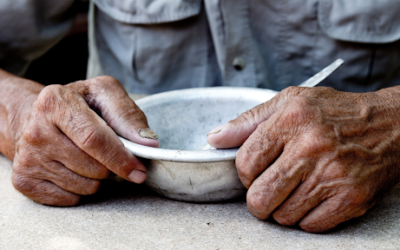“Aging is not lost youth, but a new stage of opportunity and strength.” Betty Friedan
For many seniors, getting regular exercise can be difficult. A lack of energy and issues with mobility can make even the most basic workout seem impossible. When getting out of a chair and walking across the house is difficult, how are you supposed to maintain an exercise routine? Chronic health problems and disabilities can make any movement challenging for some seniors. And unfortunately, it’s difficult to know what kind of exercise will be effective or what kind might cause injury.
But balance exercises offer low-impact ways to build muscle control, flexibility, and coordination. And these factors are vital to independent living for seniors. Balance exercises help seniors keep the ability to perform activities of daily living (ADL) and help prevent falls. All of this helps seniors stay in their own homes and maintain their dignity and independence.
There are two main types of balance exercises: static and dynamic. Each one addresses different areas and issues. Seniors can use each type to improve their mobility without doing extensive or exhausting workouts.
Why is Exercise so Important for Seniors?
One of the most important factors in whether or not a senior can live independently is their fall risk. One bad fall can lead to hospitalization, the permanent need for mobility aids, or even death.
The problem is that the older a person gets, the more fragile their body becomes. As we age we lose muscle mass and flexibility naturally. That leads to poor balance and coordination. On top of that, our bones become more brittle. If broken, they heal slower and often don’t heal completely. This leads to a vicious cycle. Once a senior has experienced a bad fall, they must be primarily immobile while recovering.
They will likely never get back to the same level of mobility they previously had. That means that one fall increases the probability of a second fall. Additionally, a bad fall often leads to the senior experiencing anxiety around falling, causing them to decrease activity in general. This leads to a more significant loss of muscle and flexibility, making a fall more likely.
However, low-impact exercises offer a safe way for seniors to prevent falls or even recover from one. One of the benefits of exercise for seniors is that it builds muscle strength and flexibility, which are vital in preventing falls. Exercises aimed at seniors, like balance exercises, target areas that are the most important for daily living. These workouts are not designed to build muscle for lifting weights or doing hard work. They’re designed to help people who are losing their flexibility and coordination and are at risk of injury from everyday tasks.
Static vs. Dynamic Balance
For seniors, both static and dynamic balance are important to understand fully when choosing exercises for their health. As always, seniors should consult their doctor before deciding what kinds of exercises to do so they don’t hurt themselves.
Static balance is when a senior is able to stand still on their own without moving. That’s why it’s called static – unmoving balance. This type of balance is difficult for many seniors, whether because of the general effects of aging, such as muscle or bone density loss, or more serious problems like neurological or inner ear problems.
Dynamic balance is defined as when a senior can retain stability while standing and performing actions where the senior is moving from that simple standing position. Walking is an example of dynamic balance or engaging in different exercises.

Balance Exercise Suggestions
“The best day to start exercising is today. Tomorrow can turn into weeks, months or years.” Mark Dilworth
There are several exercises that seniors are able to do on their own to improve their balance. Here are a few to get you started. Static balance exercises are meant to improve a senior’s standing balance without any movement. Some examples of standing balance exercises are:
Feet together: Put your ankles together with your hands at your sides, having something like a chair in reach if you feel dizzy or have difficulty maintaining balance.
Tandem stand: Standing with one foot in front of the other, heel to toe. Practice standing with one foot in front of the other.
Hip abductions: Hold onto something like a chair, raise a leg onto your knee, and hold that position.
Dynamic balance exercises are meant to help both coordination and strengthening muscles. For coordination, many exercises use both hands and feet in specific motions. For strengthening, many muscles will lengthen if not appropriately used. To get those muscles to work better, seniors need to be able to transfer their weight and not lose their balance. Two examples of dynamic balance exercises are:
Unipodal balance: standing on one foot without a senior losing their balance
Stepping tasks: Taking one step in many directions, then maintaining their steps in a specific direction.
Working with a doctor or physical therapist before beginning any particular exercise is advisable. However, if seniors want to work on their own physical regiments, they can easily incorporate some of these exercises into their routines.
Meals on Wheels of Contra Costa
Meals on Wheels of Contra Costa is an organization that looks out for seniors. Their homebound meal delivery service helps to bring healthy foods to seniors in need. But that’s only one part of the organization. Meals on Wheels is committed to providing homebound seniors with the resources to remain independent in their own homes. That includes ideas for healthy meal prep, daily social interaction, check-ins, and exercise tips.
Seniors are some of the most vulnerable people in our community, especially those who are homebound. Meals on Wheels is committed to building a community network that can support seniors through all of the challenges they face. Consider donating or even volunteering if you want to support Meals on Wheels.
Get Fit with Meals on Wheels
As we get older, our needs change. And that means our exercise needs to change as well. Balance exercises are designed to help seniors and address their specific needs. These types of exercises help build muscle and coordination, which are essential for mobility and independence. Being able to perform activities of daily living (ADL) is vital for a senior’s independence. It allows them to live in their own homes instead of moving to a care facility.
There are two main types of balance exercises: static and dynamic. Static balance exercises focus on a senior being able to stand still without moving. Dynamic balance exercises focus on a senior being able to maintain stability while moving. Each type addresses different issues and can be used together or separately to improve a senior’s overall mobility. But remember to always consult your doctor before starting a new workout routine to prevent injury. They will help you tailor your exercises to your skill level.
But if you’re ready to start a new workout routine, consider joining the Meals on Wheels 30 Day Chair Exercises Challenge! A workout challenge is a great way to kickstart and stick to a new workout habit. And knowing that other people are doing the challenge along with you adds extra motivation to stick to your goals.







